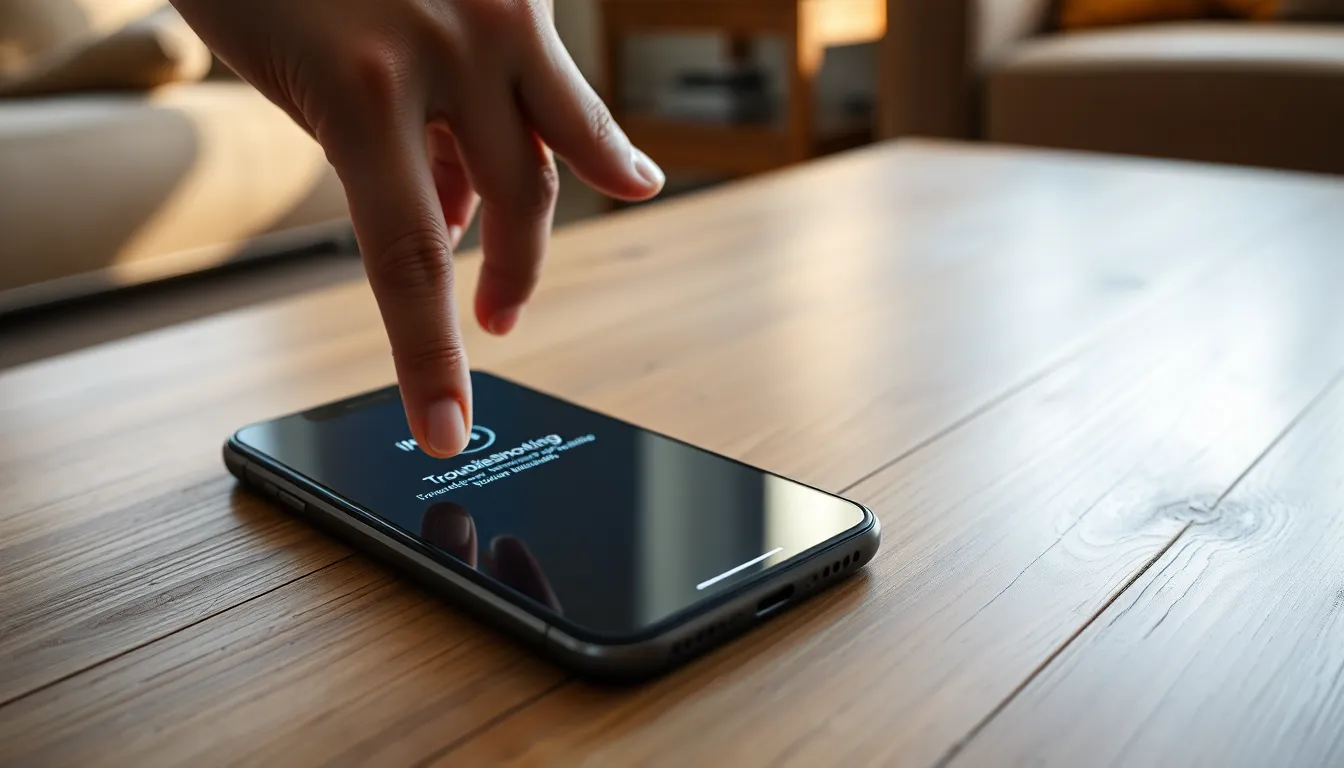Table of Contents
TogglePicture this: your iPhone 7 is disabled, and it feels like it’s holding your digital life hostage. Panic sets in as you realize all those precious selfies and important messages are locked away. But don’t worry—putting your device in recovery mode is easier than finding a Wi-Fi signal at a coffee shop.
Overview of Recovery Mode
Recovery mode on an iPhone allows users to troubleshoot and restore their device. It provides a way to access essential software features even if the phone is disabled or unresponsive. This mode comes in handy for various situations, including software updates and system repairs.
Entering recovery mode typically involves a sequence of button presses. For an iPhone 7, pressing and holding both the Volume Down button and the Sleep/Wake button is essential. Users should continue holding the buttons until they see the recovery mode screen, which indicates the device is in this mode.
Recovery mode does not delete data on the device until a user selects the option to erase. It’s crucial to understand that restoring the device may result in data loss unless backups exist. Backups can be created via iCloud or iTunes prior to this process for future security. While in recovery mode, users can choose to update the software or restore the device to factory settings.
Technical support from Apple recommends using recovery mode for severe software glitches. Users facing consistent issues with their phone can often resolve them through this method. Many users find comfort knowing that recovery mode can reactivate a seemingly useless device, ensuring access to valuable data once more.
Being aware of recovery mode keeps users prepared for unexpected issues. Familiarizing oneself with this feature can enhance device management and reduce frustration when technical problems arise.
Why Use Recovery Mode

Recovery mode serves as a vital tool for troubleshooting an iPhone 7, especially when facing issues that restrict access to the device. This feature enables users to fix software problems, perform updates, and restore the device to factory settings if necessary.
Common Reasons for Needing Recovery Mode
Many users encounter disabled devices due to entering incorrect passcodes multiple times. Others find themselves experiencing severe software glitches that make the device unresponsive. A failed software update might also trigger the need for recovery mode, preventing the iPhone from booting up correctly. Additionally, restoring from a backup when users switch devices often requires entering recovery mode. Each of these scenarios highlights the importance of knowing how to access recovery mode, ensuring effective problem resolution.
Risks and Considerations
Using recovery mode carries inherent risks, particularly the potential loss of data. Choosing to erase the iPhone while in recovery mode results in complete data deletion, emphasizing the importance of regular backups. Users unfamiliar with device functionalities may accidentally perform operations that aren’t necessary. It’s crucial to focus on steps that specifically address the issue at hand. Non-targeted approaches can complicate problems or even lead to prolonged downtime. Being well-informed minimizes such risks and maintains the integrity of valuable data.
Steps to Enter Recovery Mode on iPhone 7
Entering recovery mode on an iPhone 7 assists in troubleshooting and resolving various software issues. Follow these steps to prepare the device and access recovery mode.
Preparing Your Device
Begin by ensuring the iPhone 7 is charged sufficiently. Connecting it to a power source prevents interruptions during the process. Next, it’s essential to have your computer ready, along with the latest version of iTunes installed. Using a reliable USB cable ensures a stable connection between the iPhone and the computer. Familiarity with your passcode can help speed up the process, although it may not be required in recovery mode. Gathering this prep ensures a smooth transition into recovery mode and minimizes potential distractions.
Entering Recovery Mode
To enter recovery mode, press and hold the Volume Down button and the Sleep/Wake button simultaneously. Keep holding both buttons until the Apple logo appears on the screen. This might take several seconds. Release the Sleep/Wake button while continuing to hold the Volume Down button until the recovery mode screen shows. The screen typically displays a lightning cable icon pointing toward a computer. Connecting to your computer will prompt iTunes to recognize the device in recovery mode, allowing further troubleshooting or restoring processes. Each step plays a vital role in successfully entering recovery mode.
Troubleshooting Tips
Troubleshooting a disabled iPhone 7 can streamline the process of regaining access to important data. Users often encounter issues that require careful attention.
Common Issues and Solutions
Errors during the recovery mode process often arise from outdated software or bugs. Ensure iTunes is the latest version prior to connecting the iPhone. If the device loses power during the recovery phase, it’s essential to charge it fully and attempt the process again. Users may also face problems when the recovery screen doesn’t appear, which may indicate a faulty cable or USB port. Testing with another USB cable or port can help identify the issue. Remaining patient is crucial, as the device might take time to respond.
When to Seek Professional Help
Some situations necessitate professional assistance, especially if the iPhone encounters persistent issues. If repeated attempts to enter recovery mode fail, consulting an expert is wise. Users experiencing physical damage to their device should avoid further attempts, as this may exacerbate the problem. Additionally, individuals lacking confidence in executing recovery processes might find professional guidance beneficial. Visiting an authorized service provider can lead to safer, more efficient resolutions when encountering severe software glitches or hardware failures.
Navigating a disabled iPhone 7 can be daunting but understanding recovery mode significantly eases the process. This essential feature allows users to troubleshoot and potentially restore their device without losing data. By following the outlined steps and ensuring regular backups, users can manage their devices more effectively.
When technical issues arise it’s crucial to remain calm and informed. With the right approach entering recovery mode can be a seamless experience. For those encountering persistent problems seeking professional assistance ensures a safe resolution. Embracing these strategies empowers users to take control of their digital lives and minimize frustration.




